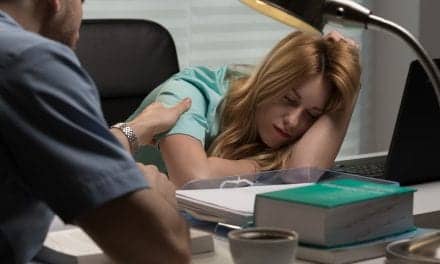People who work nontraditional work hours, such as 11 pm-7 am or the “graveyard” shift, and who develop shift work sleep disorder are three times more likely to be involved in a vehicle accident. This is according to researchers at the University of Missouri, who published their findings in the journal Safety Science.
“This discovery has many major implications, including the need to identify engineering countermeasures to help prevent these crashes from happening,” says Praveen Edara, PhD, department chair and professor of civil and environmental engineering, in a release. “Such measures can include the availability of highway rest areas, roadside and in-vehicle messaging to improve a driver’s attention, and how to encourage drivers who may have a late-night work shift to take other modes of transportation, including public transit or ride-share services.”
The analysis was based on data collected from a real-world driving study for the second Strategic Highway Research Program established by the US Congress.
[RELATED: Study Suggests Later School Start Times Reduce Car Crashes]
Edara was surprised to see shift work sleep disorder increase the risk of a traffic crash by nearly 300%, as compared to both sleep apnea and insomnia, which both increased the risk of a crash by approximately 30%.
Edara says previous studies have shown sleep disorders increase the risk for a traffic crash, but the majority of these studies were conducted in a controlled environment, such as a laboratory driving simulator. He believes this real-world data now validates those efforts.
“In the past, researchers have studied sleep disorders primarily in a controlled environment, using test-tracks and driving simulators,” Edara says. “Our study goes a step further by using actual observed crash and near-crash data from approximately 2,000 events occurring in six US states. We’ve known for a while now that sleep disorders increase crash risk, but here we are able to quantify that risk using real world crash data while accounting for confounding variables such as roadway and traffic characteristics.”
Edara says some of the limitations of their study include not having data for fatal crashes, and no formal measurement to define drowsiness.
Edara hopes that by showing how big of a risk there is for traffic crashes caused by excessive daytime sleepiness, the researchers can help draw additional attention toward finding ways to keep people safe behind the wheel, including taking the driver out of the equation with ride-sharing options and automated vehicles. He says the ideal next step in this research would be to partner with medical professionals who have expertise in this area to better understand why this is happening.
“We want to partner with public health and medical professionals whose expertise is in sleep-related research to better understand why this is happening,” Edara says. “That will also allow us to explore what kind of countermeasures we can develop and test to improve the overall safety of these drivers and the other motorists around them.”
Photo 215973730 © Ivan Kokoulin | Dreamstime.com





